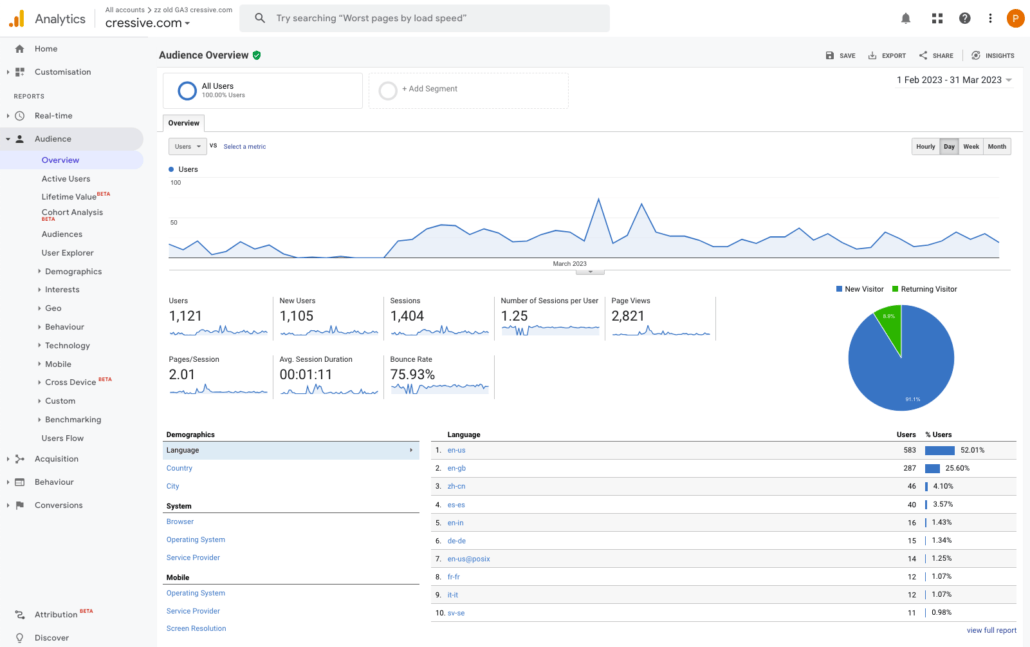GA4 and UA – What’s the Difference?
In the digital analytics world, the transition from Universal Analytics (UA) to Google Analytics (GA4) marked one of the significant events of the year and it is pivotal for any enterprise focusing on Digital Brand Governance and enhancing their Share of Voice.
While UA, with its session-based tracking system, has been an essential web data analysis tool for years, GA4 introduces a more dynamic and event-based approach. This offers a big shift on how data is collected and interpreted. And now, UA has been phased out, leaving us with GA4. This begs the question: What’s next? How do GA4 and UA differ, and what are the challenges of this transition?
Some Differences Between GA4 and UA
One of the fundamental differences lies in the tracking approach: UA’s session-based approach provided a linear view of user interactions, while GA4 with its event-based tracking offers a more granular, user-centric perspective. This change grants a deeper understanding of user behaviour and engagements.
When it comes to data visualisation, UA displayed multiple pre-set charts by default. On the other hand, GA4 works best when integrated with third-party tools like Google’s Looker Studio or the Cressive DX platform for more comprehensive data analysis. GA4 is more exploratory and customisation-based.


Another noteworthy difference is in data retention. GA4 has a reduced data storage duration limited to 14 months in the free version compared to UA and this presents a challenge for long-term data analysis and historical comparisons. Unlike UA, GA4 also includes specific features such as Streams ID and cross-domain tracking, which offers enhanced capabilities in tracking user journeys across various domains.
These are only a small portion of distinctions between the two with other differences in areas such as user metrics, pageviews, sessions, and account structure, many of which we are likely already familiar with. But, Google being Google, things aren’t that simple and the transition from UA to GA4 made things more complicated than what it was…
Issues and Aftermath – What Now?
GA4 has brought a number of challenges to the table. The shift to event-based tracking forced organisations to reevaluate their existing analytics strategies and possibly retraining of staff. The change wasn’t all sunshine and rainbows for businesses, it was a challenging process where most of them lost valuable historical data and adapting to those changes required a great deal of resources and time.
A few simply switched to other web analytics tools such as Matomo or Adobe Analytics because of GDPR (General Data Protection Regulation) a European Union regulation on information privacy. Countries including Italy, France and Austria have banned Google Analytics on the grounds of violation in data collection and storage practices.
Furthermore, GA4 relies on third-party tools for data visualisation and analysis. This necessitates partnerships with tool providers and deep understanding of those softwares, impacting both the workflow and the budget. Plus, reduced data retention impacts the importance of timely data analysis and decision making. Embracing GA4 is not just about adaptation: it’s about solid analytics strategies to remain agile in a rapidly changing digital landscape.
At Cressive DX, we have more than 3 decades of combined experience in guiding enterprises through these difficult transitions: from understanding the core differences between Universal Analytics and Google Analytics 4, to implementing new strategies for Digital Brand Governance and maximising Share of Voice. Using our proprietary software and proven industry expertise, we turn your data into insights and insights into high value solutions, pragmatically and without the fluff. Best-practice brand control leads to better Digital Brand Performance.
Originally published 1 December 2023 on LinkedIn.





